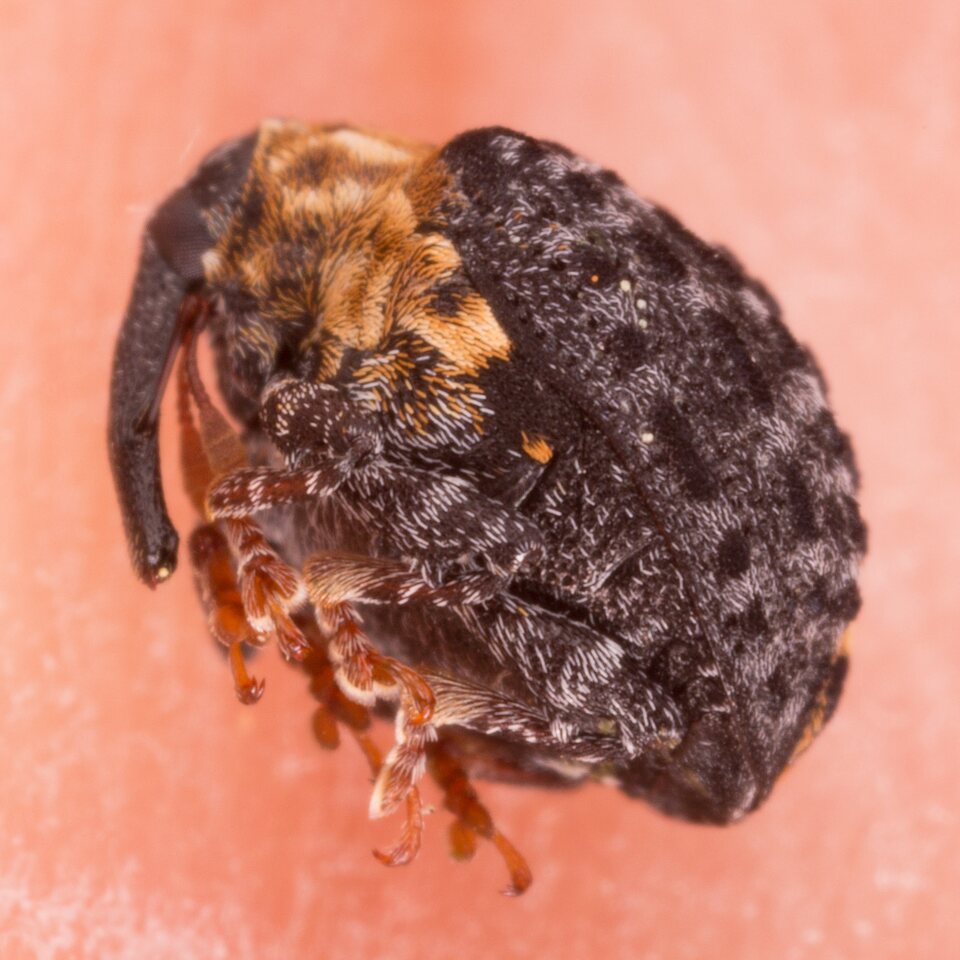
Cionus tuberculosus · dumbleninis straubliukas
- dark figworts scraper
- Dunkler Braunwurzschaber
- dumbleninis straubliukas
- oskrobek towarzyski
- mörk flenörtsvivel
- ukbeetles.co.uk/cionus-tuberculosus
- en.wikipedia.org/wiki/Cionus_tuberculosus
- naturespot.org.uk/species/cionus-tuberculosus
This widespread western Palaearctic species occurs throughout Europe from Spain to Greece and north to the UK and southern provinces of Fennoscandia, it extends east through Asia Minor and Russia into Western Siberia and is present on many of the Mediterranean islands but absent from North Africa. It it is generally common throughout this range and across most of Europe it is among the commonest members of the genus. Adults occur from April until October, typically in damp habitats; open deciduous woodland, parkland, grassland, coastal dunes and wetland margins, Among hosts plants are figworts, Scrophularia nodosa and S. umbrosa, Limosella aquatica (Scrophulariaceae).
Mating occurs in the spring after a period of feeding and females chew small but deep holes into the ventral surface of mid-ribs and insert small batches of eggs, the holes are then sealed with abdominal secretions and they wander off to find further sites, this behaviour extends over a month or so and each will produce several hundred eggs. Larvae emerge from early May, they eat through the plant tissue and emerge onto the upper side of the leaf where they will feed, producing small round holes in the leaf at first but as they grow these become larger and merge to form large holes around the veins and petioles, they develop rapidly, passing through three instars and becoming fully grown by early August. Mature larvae spin silken cocoons on the under surface of leaves or under flower buds and pupate within, this stage is brief and adults emerge by cutting a small flap into the base of the cocoon, they immediately begin to feed on the ventral surface of the leaf and soon produce large holes, they may also feed on petioles, stems and seed heads, this continues into the autumn when they enter the soil beneath the host to overwinter. Adults usually occur in numbers and during the summer the larvae may also be present, they are smooth and dark, resembling tiny slugs as they lack legs and the only obvious detail is the heavily sclerotized head, they may not be recognized as beetle larvae as they secrete a slimy brown mucus which covers the body and deters predators and parasites.
3.4-4.2mm. The general form of Cionus is distinctive. Cleopus is superficially similar but lacks the round dark elytral markings. Entirely black but for reddish-brown tarsi and antennae, lateral pronotal margins with dense yellowish or brown setae, elytra with round black markings below the scutellum and before the apex, these bordered with yellowish scales and united with long patches of white scales along the sutural interval, and alternate intervals chequered with light and dark scales. Head proportionally small, with large convex eyes that almost meet along the centre and short, strongly diverging temples, rostrum long, curved and flattened beyond the antennal insertions, finely punctured throughout and with lateral scrobes not visible from above. Antennae long and slender, scape gradually widened from the apical third, funiculus 5-segmented and the club long and slender. Pronotum shiny and finely punctured, usually substantially devoid of scales across the disc, transverse, broadest across the base and narrowed to an indented anterior margin, basal margin almost straight. Elytra broad and only slightly elongate, basal margin straight to rounded shoulders, lateral margin sub-parallel and apical margin widely rounded, striae punctured and complete to the apex, the first and second striae curved around the basal and sub-apical black maculae, all interstices with dense pale and dark grey scales. Legs long and robust, all femora toothed ventrally; the front femora about as strongly as the hind femora, apical margin of front tibiae rounded, without projections. Claws fused at the base, the male front claws unequal in length.
‥
0 comments
Add a comment
Comments